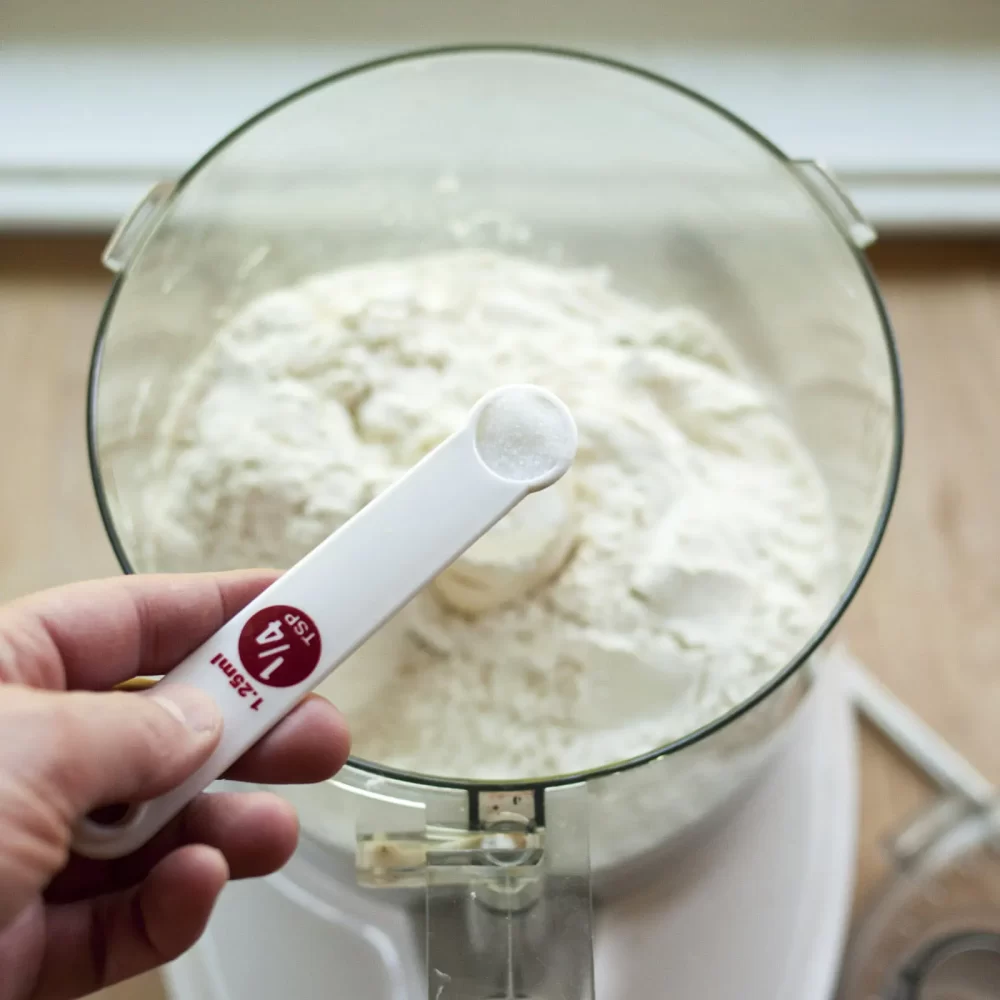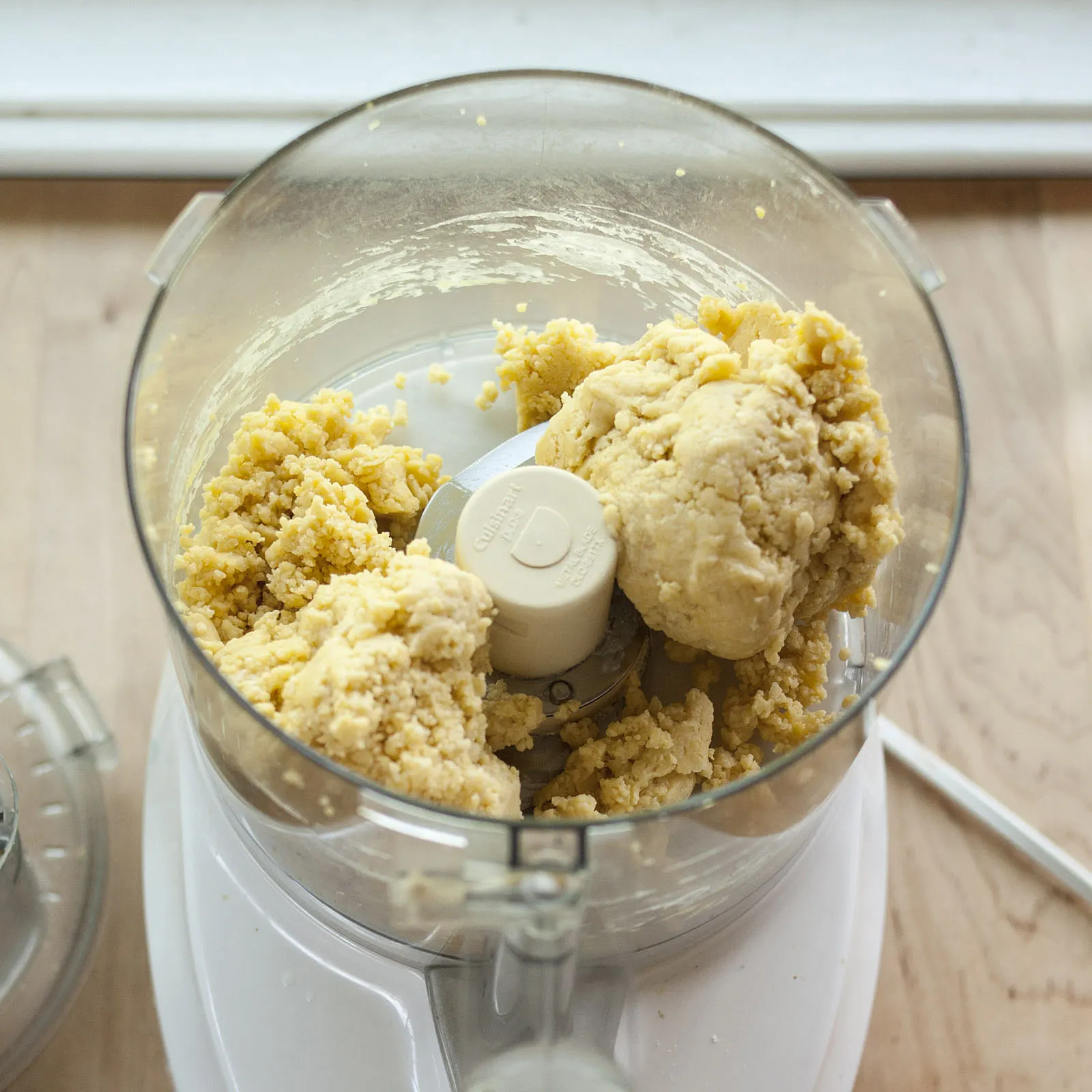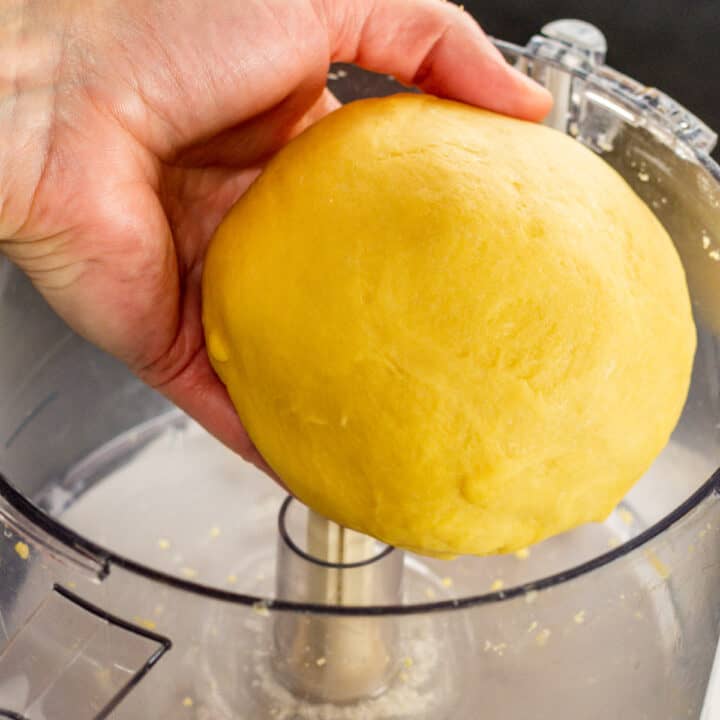
Why Use a Food Processor for Pasta Dough
Using a food processor for pasta dough offers several benefits that make the process faster and simpler. Here’s why it’s a great choice:

- Quick Mixing: A food processor can mix the eggs, flour, and other ingredients in a fraction of the time it takes to do it by hand.
- Even Consistency: It ensures that the dough has an even texture, which is crucial for pasta that cooks uniformly.
- Less Effort: You save energy because the machine does the hard work of kneading for you.
- Easier Dough Handling: The dough often turns out smoother and more pliable, which is great for rolling out by hand later.
With a food processor, pasta dough that once seemed intimidating becomes a hassle-free, achievable task. It’s a game changer for those who love homemade pasta but have limited time or experience.
Key Ingredients for the Perfect Pasta Dough
To achieve the best homemade pasta, you need the right ingredients. Here’s what you’ll need:
- All-Purpose Flour: This common pantry staple is the base of your dough.
- Eggs: Whole eggs provide structure, while extra yolks add richness and a golden color.
- Olive Oil: A touch enhances the texture and flavor of the dough.
- Salt: Essential for flavoring the pasta itself, not just the water it cooks in.
These four basic ingredients, when combined in a food processor, create a dough that’s both delicious and easy to work with. The eggs and yolks bring proteins that help the pasta hold its shape while cooking. The olive oil offers a hint of flavor and assists in achieving the perfect dough consistency. Remember to measure your ingredients carefully for the best results. Happy pasta making!
Step-by-Step Guide to Making Pasta Dough in a Food Processor
Creating homemade pasta dough using a food processor is incredibly easy. Here’s a simple guide to follow:
- Combine Ingredients: Place the all-purpose flour, eggs, olive oil, and a pinch of salt in the food processor.
- Process the Dough: Pulse until the mixture forms a rough ball. If it’s too sticky, sprinkle in more flour.
- Knead the Dough: Remove the dough from the processor. Knead for a few minutes on a floured surface.
- Rest the Dough: Shape the dough into a ball, wrap in plastic wrap, and let it rest at room temperature for at least 30 minutes.
- Divide the Dough: Cut the rested dough into smaller manageable pieces, making it easier to roll out.
- Roll Out the Dough: Using a rolling pin, roll each piece on a floured surface until it reaches the desired thickness.
Repeat these steps for each piece of dough, taking care to keep any dough you’re not currently working with covered to prevent it from drying out. In under an hour, you’ll have beautiful, homemade pasta dough ready for cooking or creating a variety of pasta shapes.
Rolling Out Your Pasta Dough Without a Machine
Once you have your pasta dough ready, rolling it out without a machine is straightforward. Here’s how to do it:
- Prepare Your Work Surface: Dust a large, flat surface with flour to prevent sticking.
- Divide the Dough: Separate the rested dough into smaller pieces for easier handling.
- Start Rolling: Use a rolling pin to flatten each piece of dough, applying even pressure.
- Achieve the Right Thickness: The dough should be thin enough to see your hand through it when lifted.
- Let It Rest: Allow the rolled out dough to sit uncovered for about 15 minutes so it dries slightly. This makes cutting easier.
- Cut the Pasta: Roll the dough loosely and slice it into strands or desired shapes.
- Flour and Separate: Dust cut pasta with a little flour to avoid clumping and gently separate the strands.
No machine is required and you still get that delightful homemade pasta experience. With patience and these simple steps, you can roll out perfect pasta dough every time. Enjoy the fruits of your labor by cooking the fresh pasta in boiling salted water for just a few minutes. Fresh, homemade pasta elevates any dinner to a special event.
Creative Serving Ideas for Your Homemade Pasta
Once you’ve mastered making pasta with a food processor, the fun begins with serving it.
- Garlic and Olive Oil: Quickly sauté garlic in olive oil and toss with pasta for a simple yet flavorful dish.
- Fresh Herbs: Add chopped fresh herbs like parsley or basil for a fresh, aromatic touch.
- Cheese: Sprinkle freshly grated Parmesan or Romano cheese for a classic finish.
- Vegetable Sauté: Toss in sautéed vegetables such as mushrooms, onions, bell peppers, or zucchini.
- Protein Additions: Incorporate grilled chicken, sautéed shrimp, or any other protein you enjoy.
- Tomato-Based Sauces: Serve with a homemade tomato vegetable ragu or roasted tomato sauce.
- Creamy Alfredo: Coat the pasta in a rich Alfredo sauce for a decadent treat.
With these ideas, your homemade food processor pasta dough becomes a canvas for delicious meals. Be creative and pair it with ingredients that suit your taste. Enjoy your homemade pasta with these simple yet versatile serving options, each promising to make your meal special.
 Tips for Cooking and Serving Fresh Pasta
Tips for Cooking and Serving Fresh Pasta
When it’s time to cook your freshly made pasta, a few tips can help ensure perfect results. Here’s what to keep in mind:
- Salt Your Water: Always add a generous amount of salt to the boiling water. It flavors the pasta from the inside out.
- Boil with Space: Use a large pot with plenty of water to give your pasta room to move and prevent sticking.
- Cook Briefly: Fresh pasta cooks much quicker than dried, usually within 3-5 minutes. Avoid overcooking to maintain texture.
- Reserve Water: Before draining, save a cup of pasta water. You can use it to adjust your sauce’s thickness later.
- Toss Gently: After draining, gently toss the pasta with your choice of sauce. This prevents the strands from breaking.
Adding flavors and textures to your pasta is easy with these serving ideas:
- Mix in Freshness: Stir through fresh herbs like parsley or basil after cooking for a vibrant taste.
- Boost with Butter: A dollop of butter can enrich your sauce and give a silky finish to the dish.
- Cheese it Up: Grate some Parmesan or Romano cheese on top for a savory touch.
- Add Textures: Include toasted pine nuts or crispy breadcrumbs for an extra crunch.
- Balance with Acidity: A squeeze of lemon juice can brighten up richer sauces and balance the flavors.
Keep these tips in mind to turn your homemade pasta into a dish that’s both delicious and memorable.
How to Store and Freeze Your Pasta Dough
Proper storage enhances your pasta dough’s shelf life and quality. Here are tips for storing and freezing:
- Refrigerate Fresh Dough: Wrap your dough tightly in plastic wrap and refrigerate if using within 2 days.
- Freeze for Later Use: For longer storage, flatten the dough, wrap well, and freeze. It lasts up to 3 months.
- Defrosting: Thaw frozen dough in the fridge overnight before rolling it out.
- Prevent Dryness: Ensure the dough is completely covered to avoid drying out in the fridge or freezer.
The process is simple:
- Prepare your dough as instructed.
- Shape into a flat disc for quicker thawing.
- Wrap the disc in plastic, then place in a freezer bag.
- Label with date to keep track of freshness.
- When ready to use, defrost slowly in the refrigerator.
By following these steps, your food processor pasta dough will maintain its texture and flavor when you’re ready to cook.
 FAQs: Troubleshooting Common Pasta Dough Concerns
FAQs: Troubleshooting Common Pasta Dough Concerns
When making food processor pasta dough, you might run into a few common issues. Here are some FAQs and their solutions to help you out:
- Why is my dough too sticky?
Add more flour, a little at a time, and pulse until the dough just stops sticking.
- How can I tell if I’ve added enough flour?
The dough should form a ball that doesn’t stick to your hands.
- What if the dough is too dry?
Sprinkle in a few drops of water and pulse until the dough looks smooth.
- Can I over-mix the pasta dough in a food processor?
Yes, don’t overdo it. Pulse until the ingredients just come together.
- Why is my pasta dough tough?
You may have added too much flour or over-mixed the dough. Knead less next time.
- How long should I let the pasta dough rest?
Let the dough rest at room temperature for at least 30 minutes to relax the gluten.
- Can I skip resting the pasta dough?
It’s not recommended. Resting helps the pasta roll out easier and cooks better.
- How thin should I roll the pasta by hand?
Roll until you can see the outline of your hand through the dough.
- How do I prevent the pasta from sticking after cutting?
Dust the pasta with flour and separate strands gently. Let them dry a bit before cooking.
- Why does my fresh pasta boil into a sticky mess?
Your cooking water might not be salty enough, or there’s not enough water in the pot.
- The pasta dough is crumbling, what should I do?
Mix in another egg yolk to add moisture and bind the dough together.
If you keep these tips in mind, you’ll master food processor pasta dough and troubleshoot any problem that arises. Enjoy your homemade pasta with confidence!





